I’m always drawn to stories where someone walks away from the predictable path and finds something unexpectedly powerful under their feet. That’s exactly what happened with John Yarema. Once an IT guy in a corporate landscape, he left the world of code and cubicles to dig into something grounded—literally: the flooring beneath our steps. His company, Yarema Inc., based in Lapeer, Michigan, might look like a flooring contractor on paper—but what they make is much more than that. These are floors with identity, floors with story.

A Different Kind of Pivot
John’s journey didn’t begin in sawdust and oak; it started in spreadsheets and dealer‐systems programming. He holds a computer science degree from Oakland University and spent five years at Electronic Data Systems (EDS) before the itch for something real grew too strong.
The spark came when John and his wife Lisa purchased a dilapidated 1850s one‐room schoolhouse. Faced with a neglected structure and a finite budget, John decided to turn that red oak on his family’s 100-acre farm into floorboards. He milled the wood, installed the planks himself, pegged them with walnut—every step rooted in intention. That act changed things. “I realized there was nothing more rewarding than building something with your hands and being tired at the end of the day,” he said.
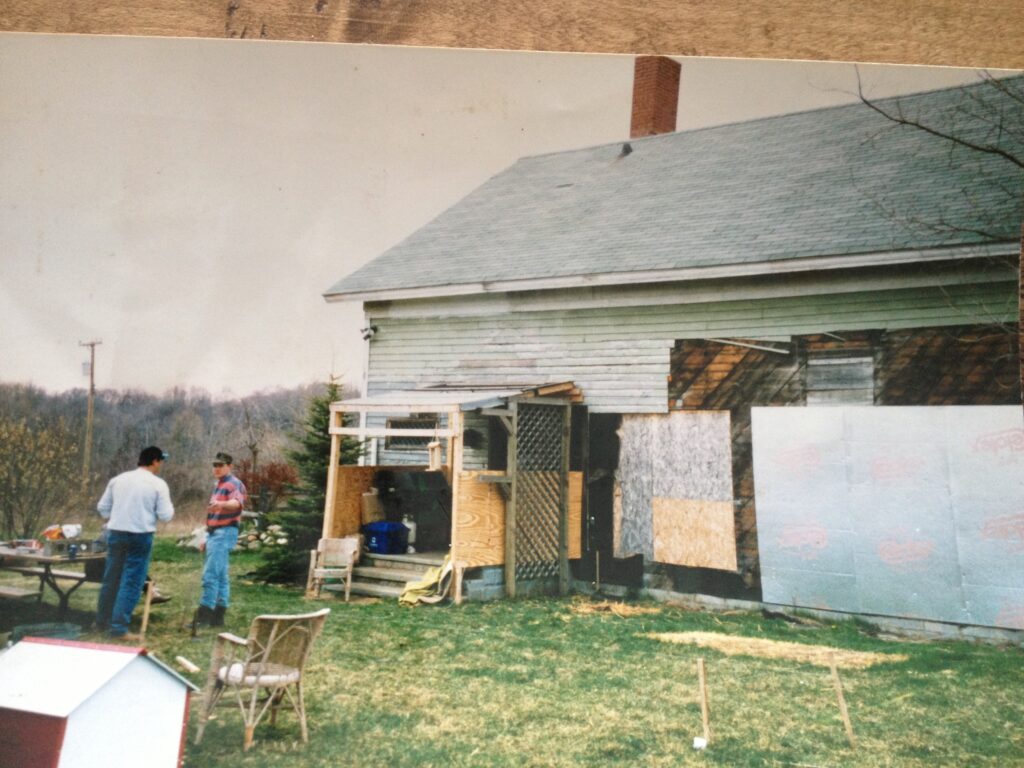
That schoolhouse project didn’t just fix a house; it opened a door. For John, it became clear: the world of flooring wasn’t just about utility—it could embody craftsmanship, material poetry, and narrative.
Yarema Inc.: More Than a Flooring Business
In Yarema Inc., John didn’t simply scale up a flooring business—he built a studio, a custom shop, a place where each project is a journey. According to an interview in Hardwood Floors Magazine, his company has won the National Wood Flooring Association (NWFA) “Wood Floor of the Year” award more than ten times.

What sets Yarema apart:
- Uniqueness over volume. The motto: “One of a kind. One at a time.” Each floor is designed, sourced, and installed to tell its own story.
- Material first. John often uses local trees, reclaimed blocks, unique species—any wood that will speak in its installation rather than be forced into a mold.
- Hands‐on leadership. John doesn’t hide behind spreadsheets or sales pitches—he’s still in the shop, still figuring out the nails, the sanding curve, the finish. In his words: “I want to do the work.”
- Sustainability as intention. It’s not just a buzzword. John reevaluated his finishes after health setbacks, started using low‐tox finishes, and often uses waste or reclaimed wood in surprising ways.
In a flooring industry where speed and margins often dominate, John’s work is slower, deeper, and more intentional.
Design Philosophy: Floors as Living Art
When you walk across one of Yarema’s floors, it’s not just underfoot—it becomes part of the narrative of the room. Here are three core beliefs that drive his work:
1. Let the wood speak.
John doesn’t force a design onto a floor. He listens to the material: “My all-time favorite is white oak … you know what you want to do, but the wood’s kind of pushing you or guiding you.” The texture, the grain, the history within the fibers—all of it becomes part of the composition.

2. Use what belongs.
In one project—all cherry and maple sourced from trees on the property within six miles of the job site—they built a 23-foot‐wide room with 23-foot‐long boards. It was about using what was there, in context. “Just like someone would have done 200 years ago,” John says.
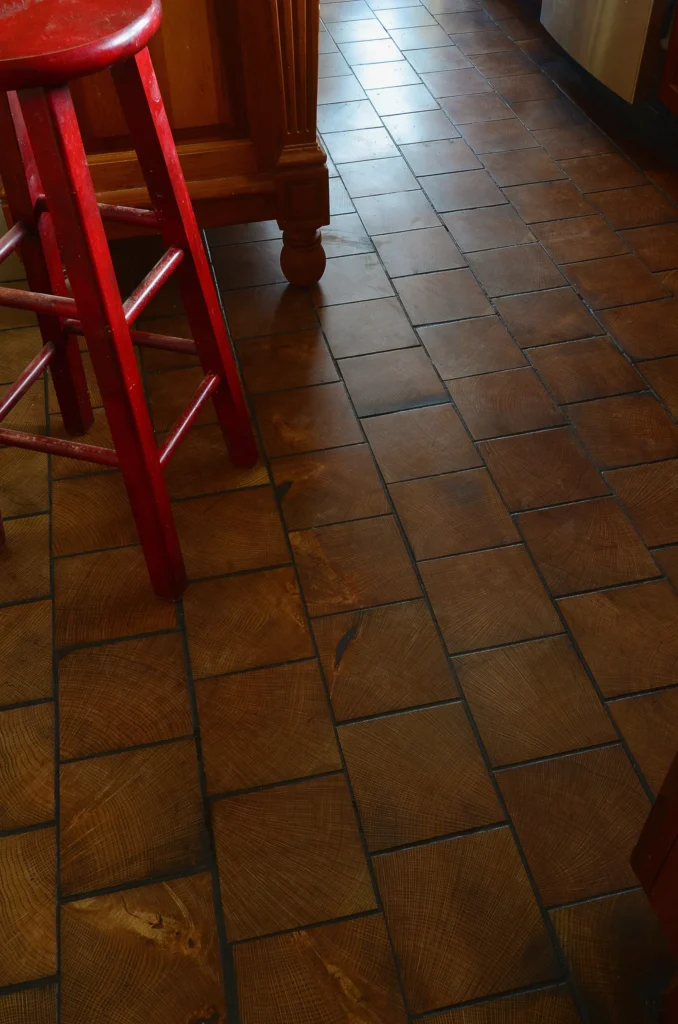
3. Craft matters.
John’s not interested in repeating cookie‐cutter floors. He likes being “in over his head”—creating something no one has done before. That stakes his business on skill, not just efficiency.
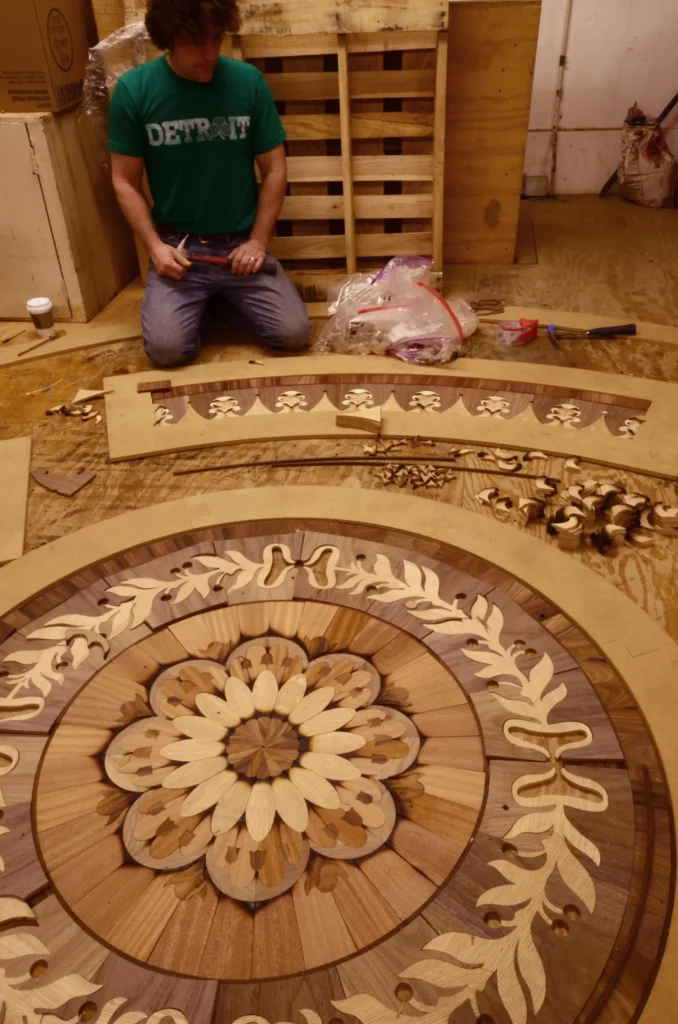
Altogether, his approach repositions a floor from “functional surface” into “crafted canvas.”
Signature Projects That Turn Heads
Here are snapshots of work that illustrate how Yarema weds story + place + material:
- The White Horse Inn (1850s): Located six miles from John’s hometown, this historic inn became ground zero for one of his most iconic floors: local cherry and maple trees cut, milled, and installed across a room with 23-foot–planks. Plank length matched room width. Local woods matched local story. The project became a true place‐moment.
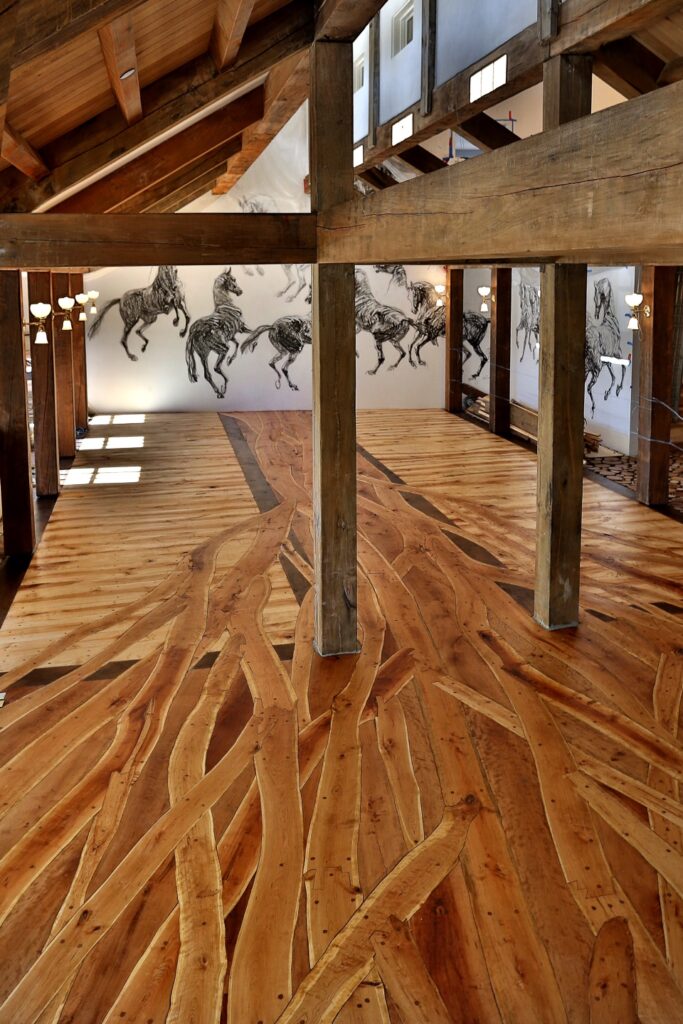
- Pallet‐Block School Floor: In a project of grassroots creativity, John collected leftover pallet wood and cut off blocks (maple, ash, beech, oak) that would otherwise have been wasted. He engaged children—let them select blocks. He kiln‐dried them, cut into 1” thick pieces, and laid a floor that didn’t just cover a room—it told a story of reuse, education, and design.
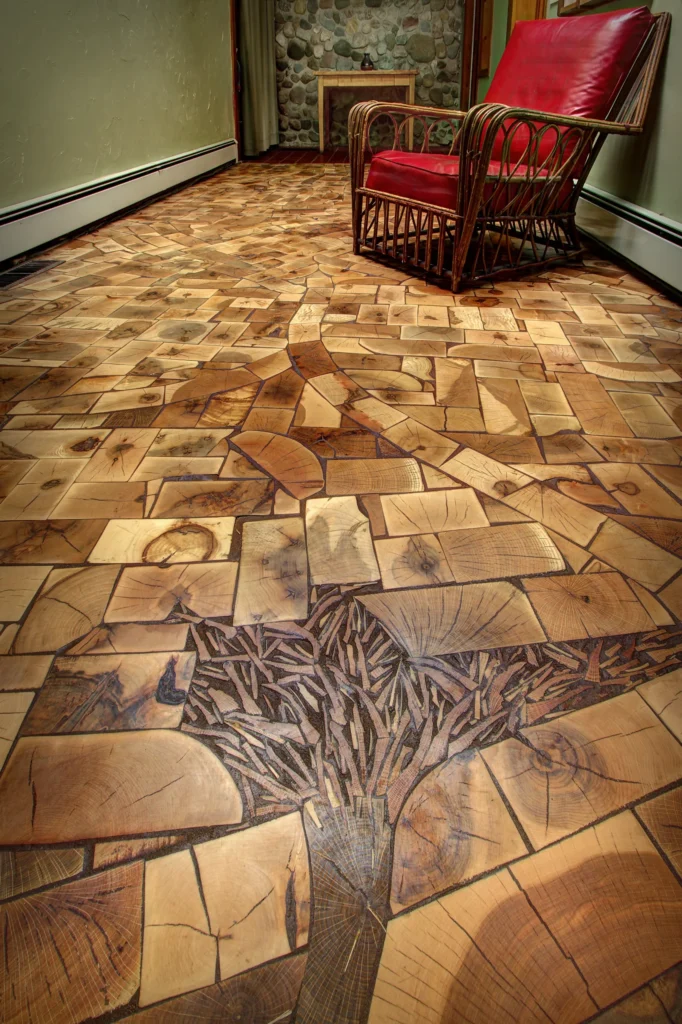
- End‐Grain & Inlay Work: Whether it’s submerged logs from the Great Lakes, Baltic birch backer boards, or intricate inlays incorporating non‐traditional materials, Yarema pushes the boundaries of what a floor can be.
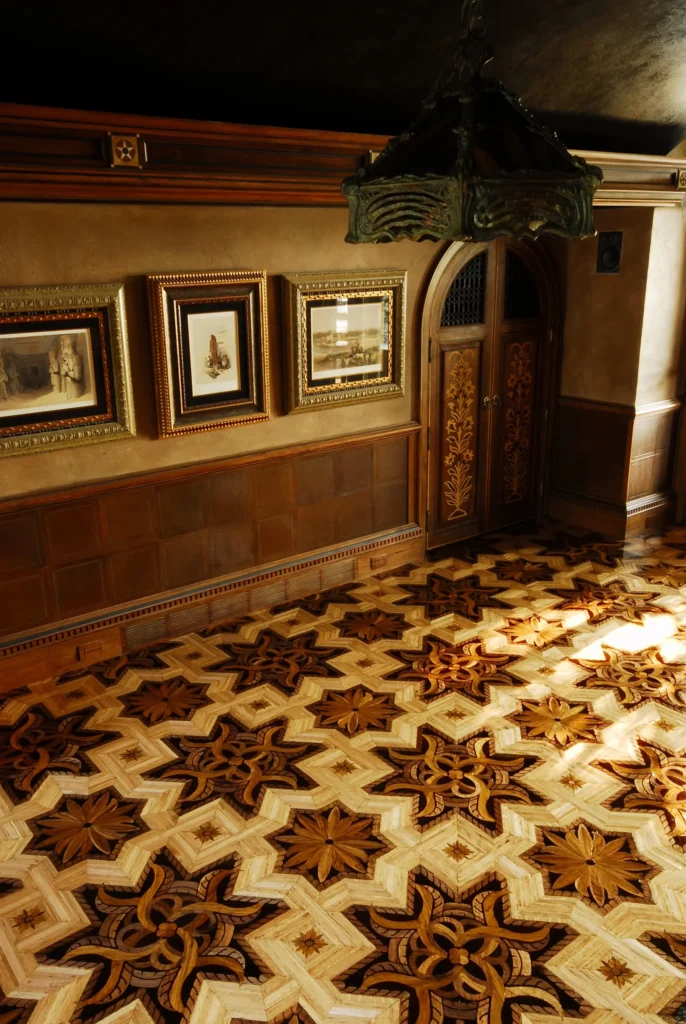
Each project is less “floor” and more “experience underfoot.”
Business & Culture: What It Takes
Running a high‐end, craft‐oriented flooring business isn’t easy—but John seems to embrace that tension.
- Talent cultivation. He mentors younger installers, passing the craft on. One article noted a 19-year-old working for John cut 5,000 pieces for a basket‐weave job on day one. This isn’t easy work—but for those who stick, it becomes craft.
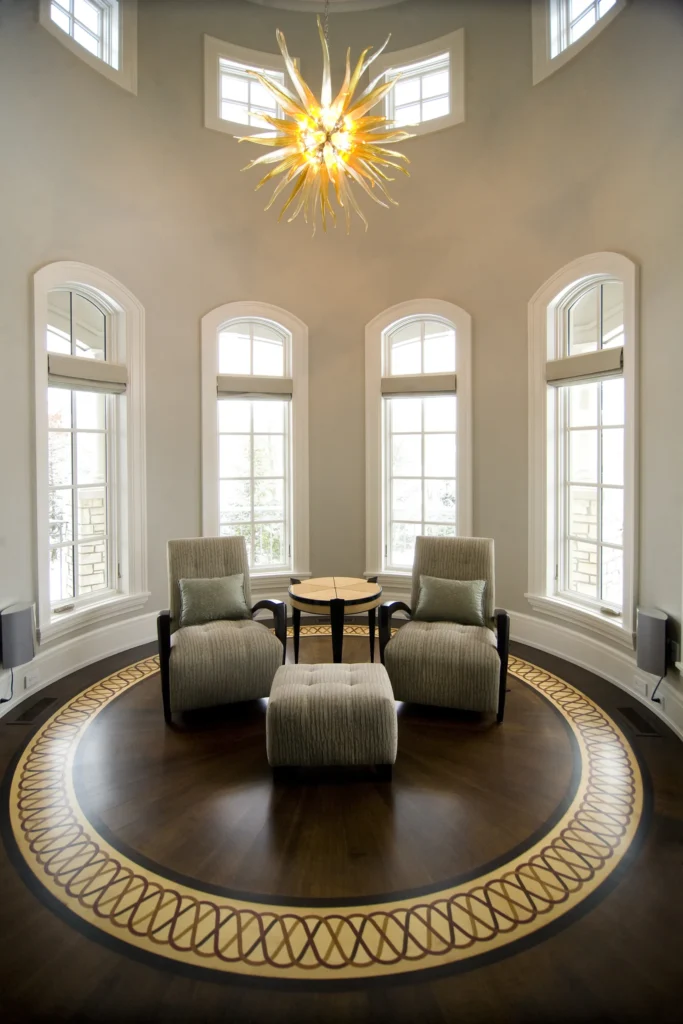
- Balance of leadership and craft. John recognized he didn’t want to delegate the thing he loved most—doing the work. So he hired someone to handle business parts, while he stayed in the shop.
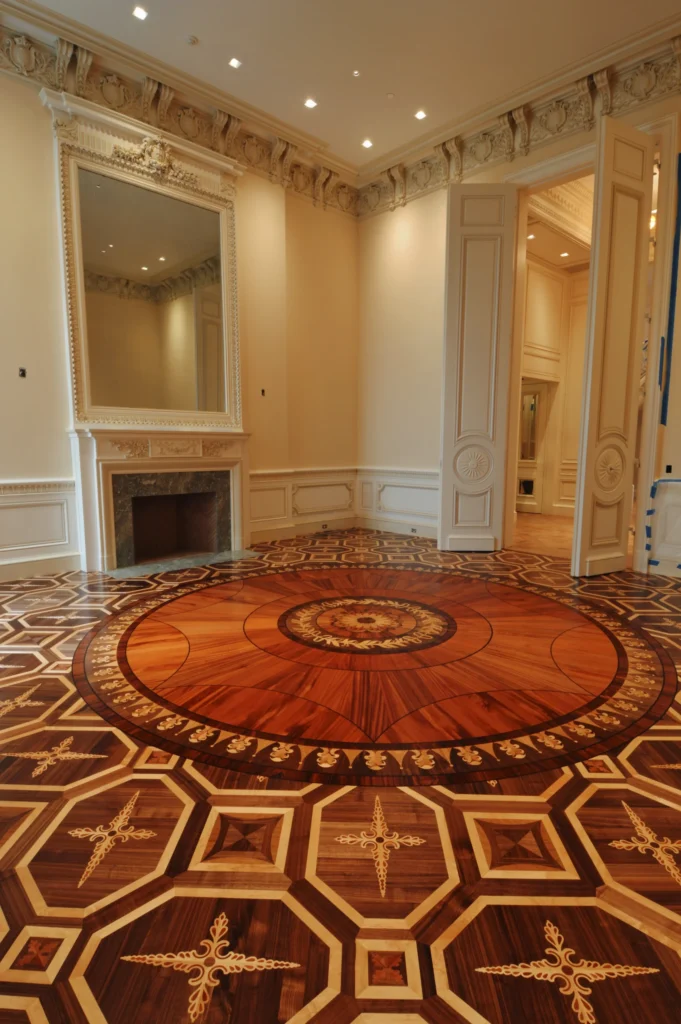
- Health and sustainability. After health concerns related to finishes, John shifted his finishing philosophy. His shop now reflects more care—for people, for materials, for environment.

- Niche positioning. While many flooring companies chase volume, Yarema Inc. chases uniqueness. That keeps the business smaller, but arguably more meaningful—and risky in another way. They’re not competing on price; they’re competing on craft.
Why This Matters in Today’s Craft Landscape
In a time where mass production is everywhere, and many surfaces are pre‐finished, quick to install, and built for speed, John Yarema’s work offers a counterpoint:
- Reconnect with material. John’s path reminds us of the satisfaction of making—of taking wood, shaping it, and letting it become part of a space.
- Value story and provenance. His use of local woods, reclaimed blocks, and stories of place tap into a growing appreciation among homeowners and designers for authenticity.
- Sustainability through craft. It’s not just about recycled materials; it’s about seeing value in what would otherwise be waste. That’s a lesson any woodworker can borrow.
- Mentorship and legacy. John isn’t just building floors—he’s building craft, passing down techniques, engaging younger hands. That matter for the future of woodworking.
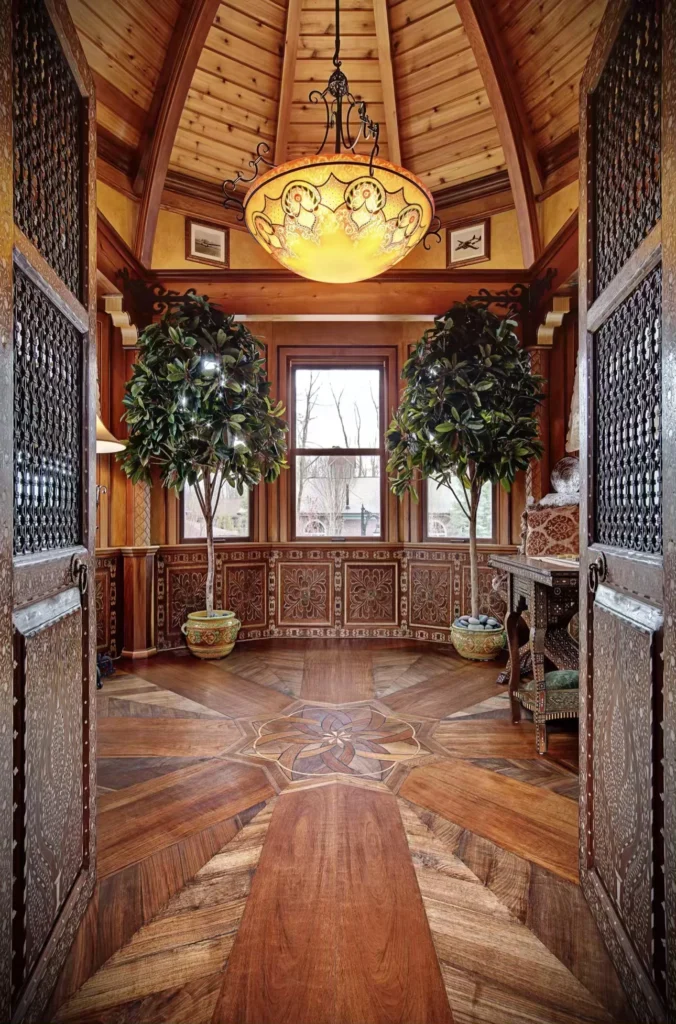
Lessons from the Shop
Here are five take-aways from Yarema’s work that feel especially rich for a woodworking ideas blog:
- Start with place. If the wood comes from near the job, use it. It gives the floor a sense of rootedness.
- Use imperfections as character. Knots, color variation, mixed species—these aren’t flaws but features.
- Make your material selection part of the narrative. Involve clients, let them pick planks, see the journey from raw wood to finished floor.
- Finish with intention. Don’t just slap on a coating—consider how the finish ages, how it feels, how it reflects your values.
- Teach and learn continuously. Want to sustain a craft business? Bring in new hands, challenge your team, keep evolving.
These are not just tips for flooring—they’re applicable to any serious woodworking.

Final Thoughts
Walking through John Yarema’s floors is like reading a quiet story. Each plank, each grain, each joint carries intention. He didn’t wake up one day planning to be a flooring artisan; he followed his hands, his curiosity—and found something deeper.

For people passionate about wood, craftsmanship, and making spaces that matter, his work is a reminder: our floors can be more than surfaces—they can be legacies. Under our feet lies context, meaning, history.

Reply